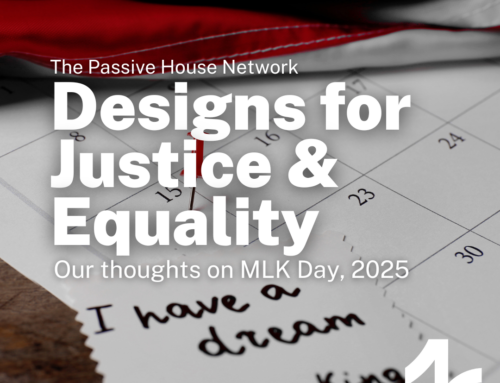The national network grows to include a long-time affiliate organization as an integrated chapter.
New York, NY. May 18, 2020 – The North American Passive House Network (NAPHN) is proud to announce that a new Chapter has been made in its national network: Passive House Western Pennsylvania (PHWPA). Headquartered in Pittsburgh, Pennsylvania, PHWPA has been an active affiliate of NAPHN since NAPHN’s founding in 2011.
“Now, as a chapter of NAPHN we’re excited that the members around our region can plug into benefits that draw on regional, national and international expertise, as befits the universal struggle for low carbon buildings,” said Gary Moisher, a PHWPA leader. “We look forward to drawing clearer connections for our members and community, between local, national, and global contacts, as active participants in a more dynamic and diverse exchange of information, in mutual support.”
PHWPA, working with NAPHN, Penn State University, and others, was instrumental in the formation of the Centers of Excellence, a United Nations initiative, initially forming centers in Pittsburgh, New York City, Vancouver, Wexford Ireland, and Brussels, Belgium, to disseminate and deploy the Framework Guidelines for Energy Efficiency Standards, a framework adopted by the United Nations Economic Commission for Europe, one of the five United Nations Regional Commissions working to implement the UN Sustainable Development Goals.
“We are happy to welcome PHWPA as a chapter. Pittsburgh has been at the forefront of Passive House activity for a long time,” said Bronwyn Barry, NAPHN President, “From institutions like Carnegie Mellon University, the University of Pittsburgh, the Green Building Alliance and the forward-thinking governance of the City of Pittsburgh – the region is an important center for innovation and we look forward to working more closely together.”
As a chapter of NAPHN, PHWPA members are equally NAPHN members and members of the International Passive House Association (iPHA), part of the Passive House Institute (PHI), based in Darmstadt, Germany. PHWPA members can now benefit from discounted admission to NAPHN’s upcoming Annual Conference, PH2020: Choose Your Future, occurring online this year from June 24, through July 29. www.naphnconference.com #PH2020
# # #
About NAPHN:
The North American Passive House Network (NAPHN) is an independent national non-profit educational organization, based in New York, and affiliated with the International Passive House Association (iPHA) and the Passive House Institute (PHI), located in Darmstadt, Germany.
NAPHN has chapters based in New Jersey (www.njpassivehouse.com), Washington DC (www.passivehousenetwork.org), the Rocky Mountain Region (www.phrockymountains.com), Minnesota (www.passivehouseminnesota.org) and Western Pennsylvania (www.passivehousewpa.com).
NAPHN supports the widespread adoption of the international Passive House design and construction standards, building science principles and protocols, as a critical response to our climate crisis – providing unparalleled effectiveness in mitigating climate disruptions and adapting to rapidly changing environmental conditions.
NAPHN is focused on the inflection point between policy and implementation. We partner with leading stakeholders across all building sectors, including governments, professional associations, manufacturers, owners, builders, labor organizations, and educational institutions – to make the transformation complete. www.passivehousenetwork.org
About Passive House:
Passive House is an international building standard and methodology, applicable to buildings of all kinds from office buildings to hospitals, new-build and renovations, that results in a dramatic
drop in operational energy use, and more comfortable and healthy occupants – meant to aggressively mitigate our climate crisis while providing resilient adaptation.
The Passive House Standard was developed by the Passive House Institute (PHI), an independent scientific research organization, located in Darmstadt, Germany, and includes specific requirements for energy use and comfort of occupants. The Passive House Standard is being successfully applied to thousands of buildings and millions of square feet around the world, from Boston to Beijing.
The Passive House methodology starts with reducing cooling, dehumidification and heating loads by focusing, not on gadgets and active technology, but instead on fully integrated durable passive building components, such as proper continuous thermal-bridge-free insulation, continuous airtightness, high-performance windows and doors, and ventilation that includes a high-efficiency heat/energy recovery core, carefully calculated, and all integrated with the entire architectural process of design and construction. www.passivehouse.com www.passipedia.org




